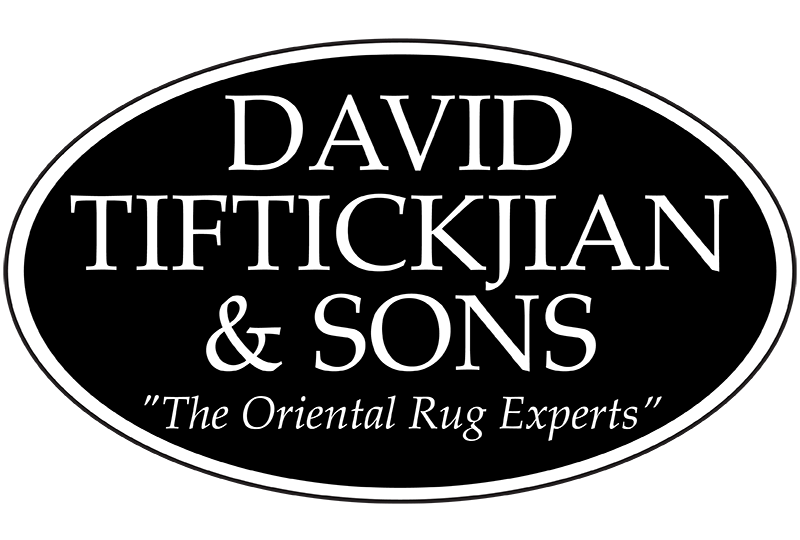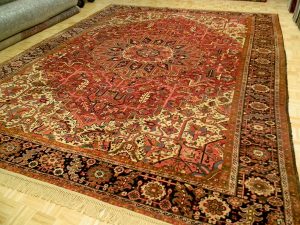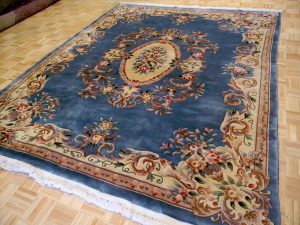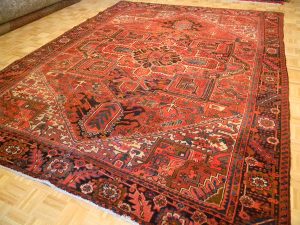Oriental. Antique. Area rugs. Large rugs. Fair prices.
To gaze upon an ancient Oriental Rug is to imagine oneself in a Persian Garden or traveling by camels with nomads. Older Oriental Rugs are valued by museums and collectors for a number of reasons: their rich color and textures, the craftsmanship that went into their weaving, their cultural and historical interest and possibly, the most important, their scarcity.
The craft of Oriental Rug weaving is divided into four main geographical regions: Turkey, Persia (now Iran), Turkoman Areas in Afghanistan and Soviet Union, and the Caucasian areas. Oriental Rugs are divided into further categories according to the specific region in which they were made and their age. Antique Rugs are at least 100 years old, while semi-antique rugs are at least 50 years old. By district, the carpets fall into three main groups: tribal and nomadic (ex kazak, tekke), village (ex. Shiras, Hamadan , Bedjar) and finally, city (ex. Tabris, Kashan, Kirman). There are hundreds of rugs named after villages and cities, even tribes. In the early days, these names identified quite accurately the geographical or tribal origin of the rug.
Each style of rug is distinctive and each rug is unique, because of variations in dye and design, as well as weaving techniques. Tribal rugs have mostly geometric designs, while city rugs have more sophisticated floral designs and village rugs are “middle of the road” between city and tribal.
The most reliable method for a novice collector to use to identify an antique and/or semi-antique Oriental rug is to study the underside of the rug. Hand knotted (as opposed to machine made) Oriental rugs have a pattern as clearly defined on the back as it is on the front. Contrary to popular wisdom, a high knot count doesn’t necessarily mean superior quality or higher value. A good wool rug, for example, with considerably fewer knots per inch, is better than a finer rug with interior silk. Generally, the higher quality wool, the better value. Also, pay close attention to the condition of the rug, make sure the rug has its ends, edges and borders. In addition, make sure the rug is evenly worn, because rugs with low areas are not as durable and not as valuable.
At David Tiftickjian & Sons, we carry a wide selection of antique and semi-antique Oriental rugs to satisfy any collector’s needs. We carry a variety of sizes, from 1×1 to palace size. We offer a complete Oriental Rug Appraisal service. In addition, we buy and sell used Oriental Rugs as well.
We have accumulated an unbelievable selection of vintage and trade-in rugs over the last 100 years and our prices cannot be matched. We extensively clean and refurbish every rug before offering it for sale.
David Tiftickjian & Sons has an excellent selection of antique oriental rugs for customers expecting fair prices and great quality. Our knowledgeable approach to selling antique rugs, as well as our dedication to customer service and 100% satisfaction guarantee, ensure that our clients feel confident in every purchase they make.
Visit us today to view our extensive collection of antique oriental rugs to find the perfect rug for your home.



